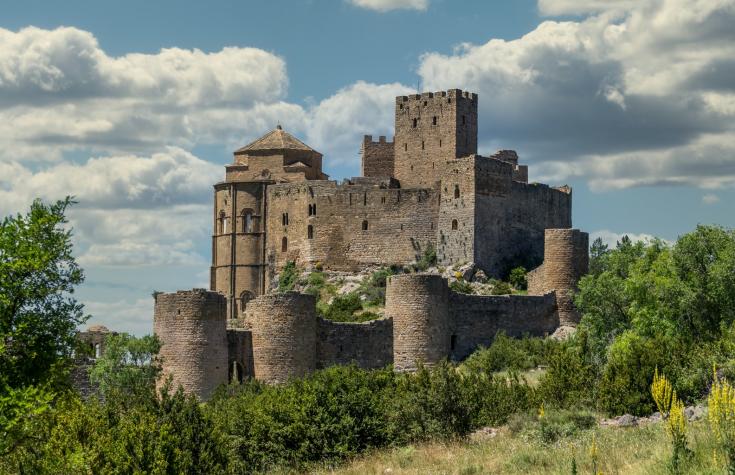Webinar recording: Cultural heritage in mountain regions

On 9 November 2021, the Interreg Europe Policy Learning Platform held a webinar on ‘Cultural heritage in mountain regions’.
Mountains cover almost one third of the EU territory and they possess both a rich natural and cultural heritage that links to our common European history. However, challenges such as depopulation and systematic lack of services make it difficult to valorise the cultural heritage.
The webinar presented opportunities for sustainable socio-economic development in mountain areas stemming from tangible and intangible cultural heritage featuring the digitization of museums, food cultures, accessibility of castles and the implementation of thematic trails.
Webinar recording
Webinar agenda
00:01:55 Introduction to the agenda and topicby Astrid Severin, Thematic Expert of Environment and resource efficiency
00:08:55 Interview with Marie Clotteau, director at Euromontana, on cultural heritage as a development asset for European mountain regions
Showcasing museums and food cultures of mountain regions
00:21:09 Presentation by Veronica Lisino, Curator, Centro Documentazione Museomontagna (IT) on digitalising cultural heritage of mountains: the iALP experience (Interreg ALCOTRA project iALP)
00:23:27 Q&A: Can other mountain museums join the platform?
00:35:20 Q&A: What difficulties did you face to make different museums work together and the 3D visualisation? Do you have any recommendations for museums to join you in this process?
00:37:38 Presentation by Nicoleta Lașan, Executive Director at Satu Mare County Intercommu on the Carphatian Culinary Heritage Network (EPICAH project)
00:46:25 Q&A: You mentioned you developed a logo and a brand with 40 business, what are the criteria to benefit from this logo? Do you need to be in the area or are there specific quality criteria?
Featuring castles and trails in mountain regions
00:53:13 Presentation Daniela Relovska and Otília Barlíková from Castle of Stará Ľubovňa (SK) on increasing accessibility: the barrier-free Castle of Stará Ľubovňa (CRinMA project)
01:07:46 Q&A: How about accessibility to all, not about people specifically with disabilities but also e.g. seniors, families with very young children. Do you also try to increase the accessibility for all?
01:09:43 Q&A: Do all these measures put in place for disabled people, do they always present a cost or are they also sustainable budget wise?
01:12:12 Presentation by Sofia Martins, EU Project Manager at Irradiare, Alentejo (PT), on valorising a natural footpaths in Alto Alentejo (RAMSAT project)
01:21:13 Q&A: How did you achieve to involve private partners to make them part of the journey and to have them bring in tourism?
01:23:15 Q&A: In which sectors of policy areas do you see your project has spill-over effects or benefits?
Key learnings
- Cultural heritage takes many forms and consists of cultural and creative resources of a tangible and intangible nature such as castles and museums, food practices, knowledge, thematic trails and agricultural traditions such as pastoralism, a typical farming activity in mountain regions.
- The digitization of museums and trails are important tools to preserve and visualize cultural heritage.
- Boosting cultural heritage comprises more than just specific tourism projects but addresses socio-economic development of a region and the well-being of its citizens and visitors
- Increased accessibility of cultural institutions such as museums and castles should cater for both people with reduced mobility such as the elderly or young families as well as people with disabilities such as the blind or hearing disabled persons
- Common branding and the collaboration of all relevant stakeholders are key success factors for the implementation of cultural heritage strategies
- Thematic trails are an excellent tool to bring visitors to the hinterland and to offer opportunities for local value chains and businesses
- All projects confirmed positive development impact from the projects implemented in terms of more visitors coming inland, increased entrepreneurship and new businesses created, young people bringing new business ideas to the region and can be attracted with specific IT adaptations such as games and festivals. Networking, partnerships and new opportunities for collaboration have emerged
- For more information on the European policy framework, EU funding and many more good practices on museums, thematic trails, food culture and castles, take a look at the .
